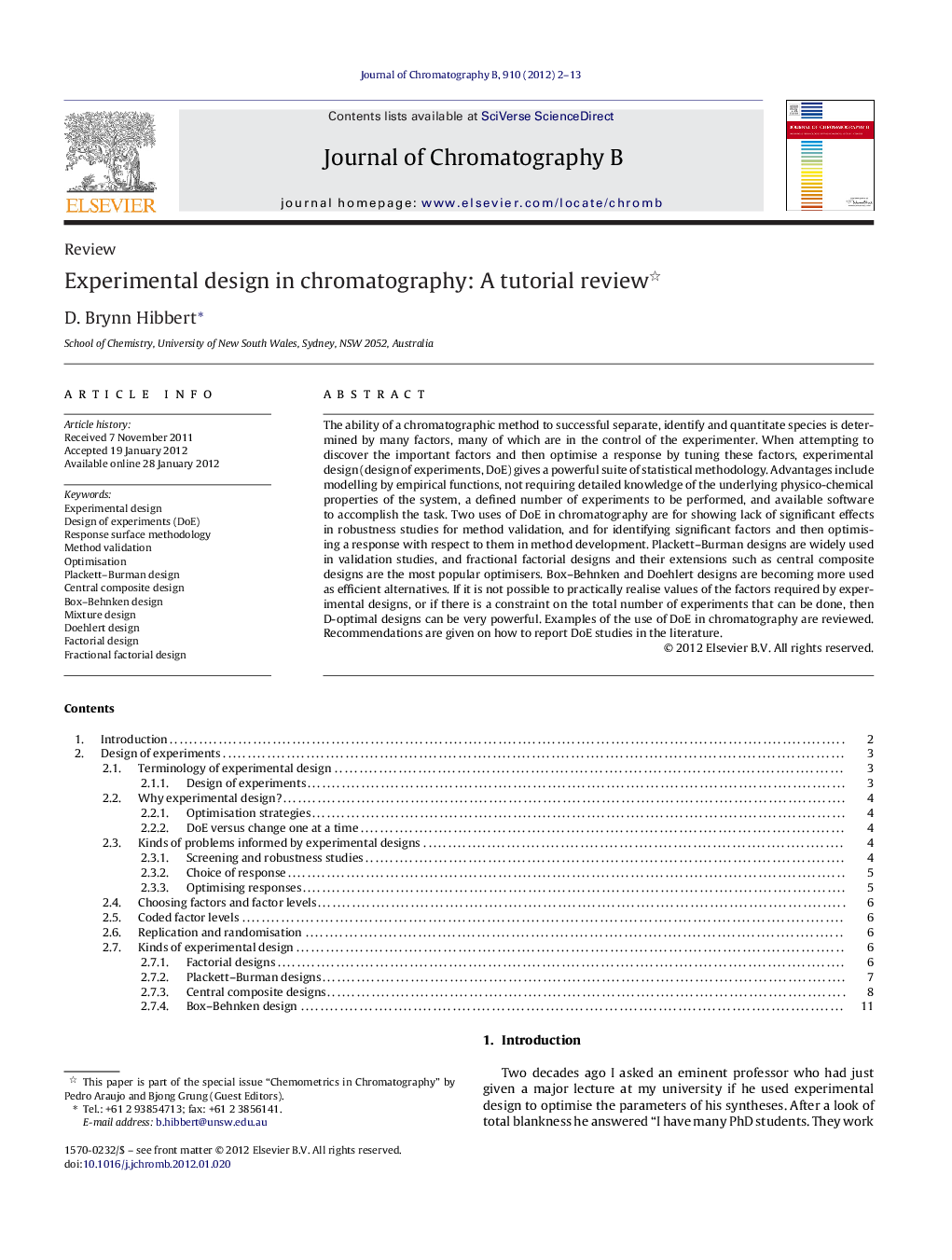| کد مقاله | کد نشریه | سال انتشار | مقاله انگلیسی | نسخه تمام متن |
|---|---|---|---|---|
| 1216740 | 1494120 | 2012 | 12 صفحه PDF | دانلود رایگان |

The ability of a chromatographic method to successful separate, identify and quantitate species is determined by many factors, many of which are in the control of the experimenter. When attempting to discover the important factors and then optimise a response by tuning these factors, experimental design (design of experiments, DoE) gives a powerful suite of statistical methodology. Advantages include modelling by empirical functions, not requiring detailed knowledge of the underlying physico-chemical properties of the system, a defined number of experiments to be performed, and available software to accomplish the task. Two uses of DoE in chromatography are for showing lack of significant effects in robustness studies for method validation, and for identifying significant factors and then optimising a response with respect to them in method development. Plackett–Burman designs are widely used in validation studies, and fractional factorial designs and their extensions such as central composite designs are the most popular optimisers. Box–Behnken and Doehlert designs are becoming more used as efficient alternatives. If it is not possible to practically realise values of the factors required by experimental designs, or if there is a constraint on the total number of experiments that can be done, then D-optimal designs can be very powerful. Examples of the use of DoE in chromatography are reviewed. Recommendations are given on how to report DoE studies in the literature.
► Design of experiments can efficiently optimise a chromatographic response by finding best values of factors.
► DoE with a Plackett–Burman design can be used in method validation to show robustness of a method.
► Central composite designs (CCD) are the most used for optimisation of 2–5 factors.
► Box–Behnken and Doehlert designs can be more efficient than CCD.
► D-optimal designs are used when the factor space is restricted or numbers of possible experiments is limited.
Journal: Journal of Chromatography B - Volume 910, 1 December 2012, Pages 2–13